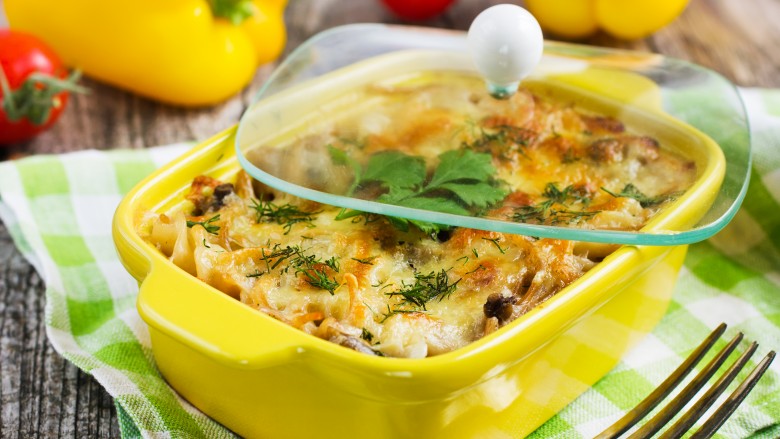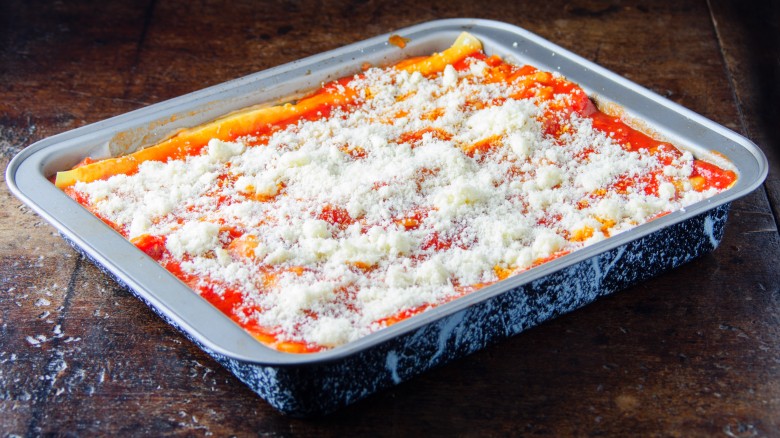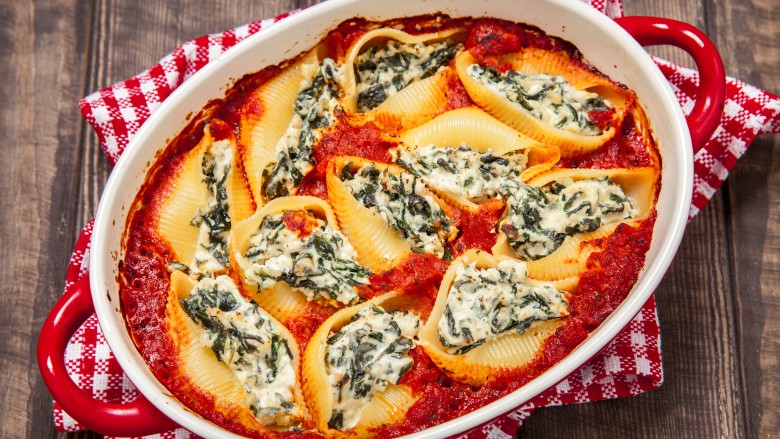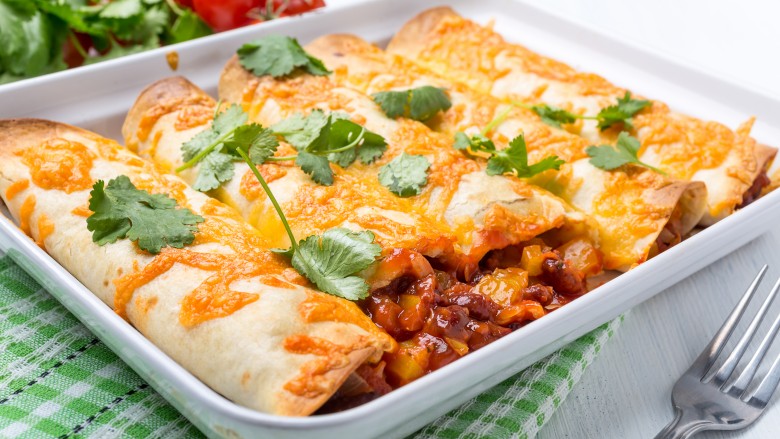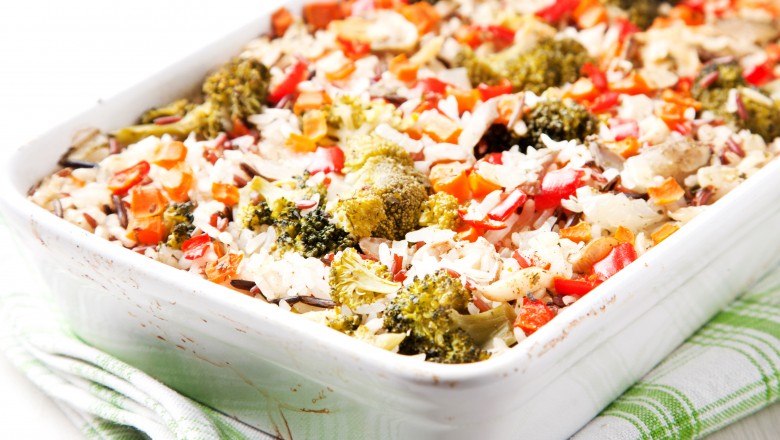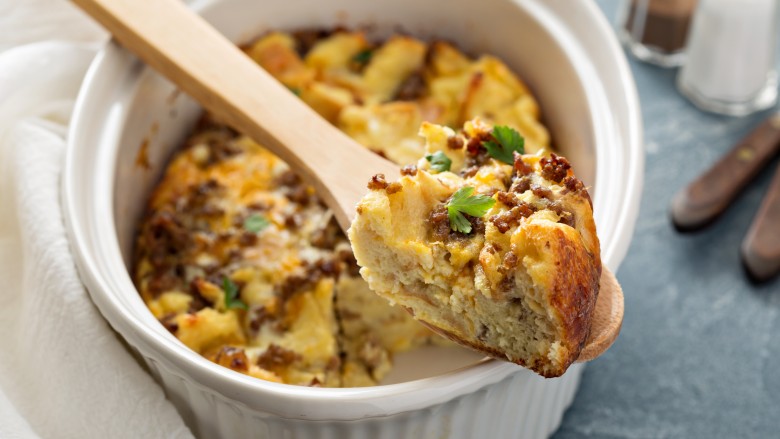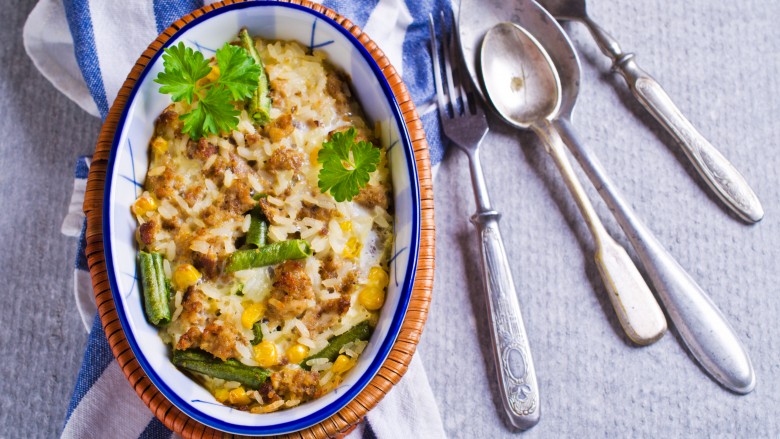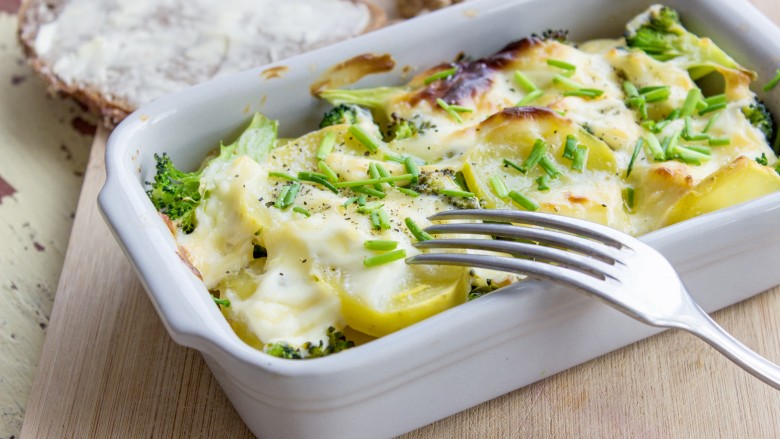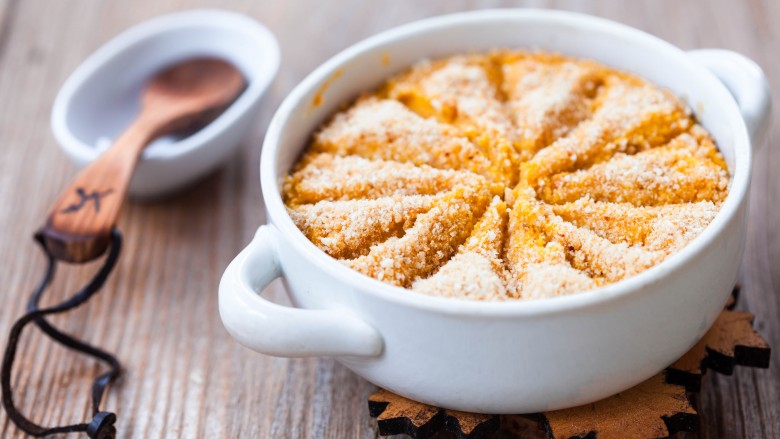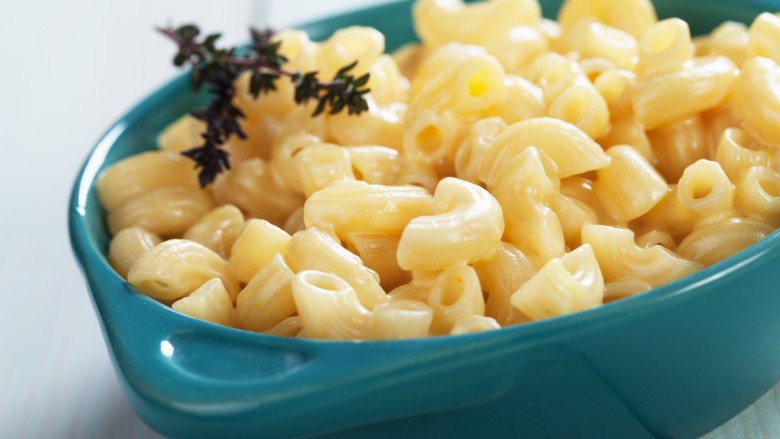Casseroles You Can Make Now And Freeze For Later
What could be better after a long day at the office than a hot, homemade meal? The kind that you cooked with extra loving care and stuffed full of comforting, hearty ingredients that never fail to please. You may not have time on a weeknight to prep and wait for a homemade casserole to be ready for dinner, but prepping ahead, and employing your freezer to store your hard work for you means you can enjoy that homemade casserole anytime. When I make a casserole recipe, I always double up — one for tonight and one in the freezer for the future. That freezer stash has saved me more than once when I didn't feel like cooking. I've even gifted them to neighbors with newborns or busted them out when unexpected guests visited at dinner time.
How to freeze a casserole
A few rules of thumb when freezing and baking a casserole. The good news is that almost all casseroles can be frozen. Some recipes may give you explicit instructions on how to freeze and bake them. Follow those instructions when they're available. If they aren't, don't fret. You have a choice of either baking the casserole completely and then freezing it, or freezing it before baking. Whichever choice you make, you should always allow the casserole to come to room temperature before wrapping it well and freezing. You may want to leave off any textured toppings (think breadcrumbs, chopped nuts, etc.) that might not fare well being cooked, frozen, and reheated. Add these during the reheating stage.
And you can choose if you want to thaw it before baking or transfer it straight to the oven. If you have stored it directly in a glass container, like a glass baking dish, you'll want to let it thaw some, maybe even overnight. Otherwise, you risk the glass shattering in your oven. If you store the casserole in a disposable aluminum pan, you can transfer it straight to the oven, but allow for plenty of cooking time to get the job done. Cover the casserole for most of this time, only removing the cover in the last 15 minutes or so of cooking. A finished casserole will be hot in the center and bubbling at the edges. You may want to place the casserole pan on a larger baking sheet in case anything bubbles over. Allow your casserole to rest for at least 10 minutes before serving. Most casseroles will hold their heat for 45 minutes or even longer.
Lasagnas
Yes, lasagna is indeed a casserole! And so many lasagna recipes freeze beautifully. My favorite go-to lasagna recipe, the Barefoot Contessa's turkey lasagna (which I now have memorized because I've made it so many times), is a scrumptious blend of turkey sausage, goat cheese, and homemade tomato sauce. I make it ahead and refrigerate it uncooked if I'm using it within 24 hours. Otherwise, I cook it until just done, allow it to come to room temperature, then wrap it well in foil and plastic for freezer storage. When I'm ready to eat it, I cook the frozen lasagna in a 400 degree oven, covered, for over an hour until it's hot throughout.
For more make-ahead lasagna recipes, consider Betty Crocker's meat lover's lasagna roll-ups that get a healthy dose of spinach. They're frozen uncooked, then thawed before popping them in the oven for dinner. For a lighter freezer-ready lasagna, try this zucchini and eggplant lasagna from Cooking Light that will let you enjoy your summer garden's veggies in the winter months.
Other Italian flavors
So many Italian casseroles to make, so little time. Karrie at Happy Money Saver makes an easy and economical batch of ricotta-stuffed shells for freeze-ahead ease. She prepares them in a disposable aluminum baking tin that she labels with the name of the dish, plus cooking instructions to make a weeknight dinner smart and simple. If you're getting a little tired of tomato sauce-based casseroles, check out the Six Sisters' recipe for chicken tetrazzini casserole (sub turkey if you wish) that happily does not call for a can of creamed, condensed soup. Prepare and freeze uncooked, then thaw before baking. At Taste of Home, pre-cooked chicken is combined with Alfredo sauce and pesto, then tossed with penne for a creamy one-pan chicken casserole that can be frozen uncooked, then thawed overnight in the fridge before making.
Mexican flavors
I don't know about you, but I go wild for just about anything cooked with or dunked in salsa verde — and I mean the Mexican tomatillo-based sauce, not the green, herb-filled kind of salsa verde that my Italian grandmother cooked with. (Although that was pretty tasty, too.) Adam and Joanne at Inspired Taste make a chicken enchilada casserole with salsa verde that's pretty darn close to my own. A quick and creamy sauce is made with garlic, sour cream, and salsa verde. Cheese and shredded rotisserie chicken are mixed in. Tortillas are filled, placed snugly in a casserole dish, then covered with more sauce. They recommend that you cook the enchilada casserole through and then freeze. Reheat when you are ready in a 350 degree oven for 30 minutes.
If salsa verde has too much tang for you, try this casserole made with ground beef, black beans, cheese, and red enchilada sauce, layered with corn tortillas. We call this "Mexican lasagna" at my house, and even my finicky eaters enjoy it. I also cook this one completely before freezing.
Get creative with your grains
If you're looking for clever ways to cook with quinoa, consider adding it to your next casserole. It may sound odd, but quinoa is a hearty enough grain to stand up to a casserole's long cooking time, and it packs a brilliant punch of fiber and protein. Betty Crocker offers a Hawaiian pizza quinoa casserole complete with pineapple and ham. Cookie and Kate make a broccoli, cheddar, and quinoa gratin casserole topped with garlicky breadcrumbs. Cook both completely before freezing.
Farro is another grain that doesn't get nearly enough use, so I look forward to using it in Smitten Kitchen's crusty baked cauliflower and farro, featuring ricotta and fontina cheeses, salty capers, and fragrant sage. If you're partial to wild rice, Taste of Home offers up a prize-winning wild rice and chicken casserole made with mushrooms and slivered almonds.
Breakfast casseroles
My favorite savory breakfast casserole dish, the strata, has endless variations. It's made the night before you want to bake it, so it's ideal for holiday brunches or when you've had a particularly raucous evening with your overnight guests. All you need is bread, eggs, milk, cheese, and as many or as few additions as you like. Perhaps asparagus with leek and ham, or cheddar and sausage. You can make your own strata with one part each of milk, eggs, cheese, and add-ins, plus two parts bread. Make more than you need, cook completely, and freeze.
For those who prefer something on the sweeter side, consider a blueberry French toast casserole layered with French bread, cream cheese, and frozen blueberries. It can be assembled completely, then frozen. The day you're ready to bake it, make a quick sauce with blueberries, sugar, and cornstarch to spoon over.
Asian flavors
You can skip the Chinese take-out tonight if you have one of these Asian flavored-inspired casseroles waiting in the freezer. Janetha at Meals and Moves created this creamy chicken and cashew casserole that includes brown rice and is thickened with Greek yogurt and organic cream of mushroom soup. Judith at The Midnight Baker makes a crunchy beef and broccoli casserole seasoned with garlic, onion, and soy sauce. Add the crispy chow mein noodles the day you plan to bake it. Andi Gleeson of The Weary Chef presents her unique take on tuna casserole with a teriyaki tilapia casserole. The tilapia is mixed with brown rice, cabbage, and mushrooms. Save the almond and sesame seed toppers for the day you serve it.
Vegan casseroles
You may feel hard-pressed to find a casserole recipe that isn't swimming in loads of cream and cheese, but there are some dependable recipes out there for anyone looking for an entirely plant-based pan of comfort food to pop in the oven after a long day at work. Martha Stewart features a rutabaga gratin cooked in a homemade sauce of cashew cream and nutritional yeast, then seasoned with fresh thyme and marjoram. Florian at Contentedness Cooking makes a potato casserole that has a lot of veggie goodness on top of the potatoes. It also features fresh corn, bell peppers, zucchini, and eggplant. Sauced with coconut milk and topped with macadamia nuts, this casserole is gluten-free and vegan. Nava at Veg Kitchen makes a vegan noodle kugel that's perfect for the Jewish holidays, or really any day. The sweet noodle pudding has raisins, apple, cinnamon, and vanilla, and is made vegan with the use of vegan sour cream or cream cheese.
Casserole side dishes
If you're looking for an unexpected side dish, this one is really a winner. It's a shrimp and grits dressing (we'd call it stuffing in my parts) from Southern Living. The recipe recommends serving it at Thanksgiving, but I think it's a dish that could work well anytime of year. If you're still feeling adventurous, how about a departure from the ordinary, marshmallow-topped sweet potato casserole? Sweet curry chickpea casserole features chunks of sweet potato and apple in a curried blend of coconut milk and spices. If you're a side dish traditionalist, it doesn't get more traditional than baked potatoes. Fabulessly Frugal has a great recipe for baked potato casserole that gets completely frozen — bacon and all.
Mac and cheese champions
Who doesn't adore a good mac and cheese? This king of casseroles makes for a delicious and comforting side dish or main meal and is beloved by young and old alike. For a truly five-star mac and cheese recipe that doesn't take all day, look no further than Ina Garten's famous mac and cheese recipe that teaches us all that the quality of the cheese we use can really make or break a dish. I've made this myself more than once, as well as Ina's lobster mac and cheese. Both freeze beautifully. Moving on through the Food Network family, Aida Mollenkamp makes a pesto mac and goat cheese, and Rachael Ray gets inventive with a jalapeno popper orzo mac and cheese. With all mac and cheese recipes, prepare as directed on the stovetop, transfer to your storage container, and freeze when the dish reaches room temperature. Bake thawed or from frozen, adjusting time accordingly.

